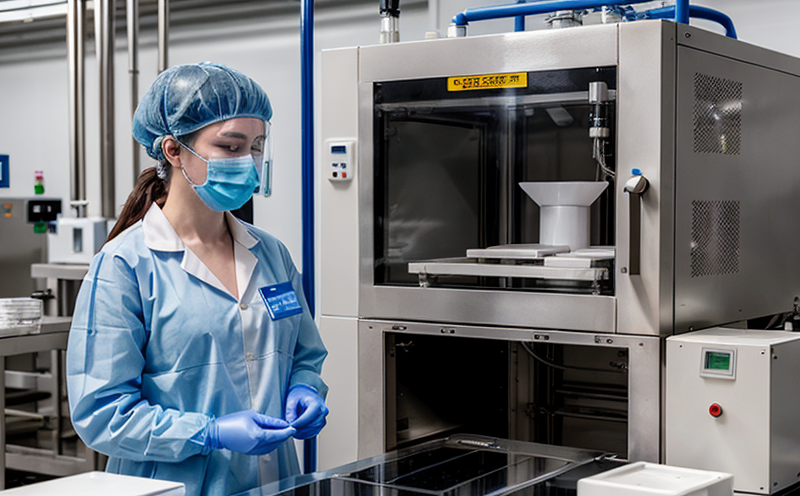GMP Sterility Test Method Suitability Testing
The Good Manufacturing Practice (GMP) Sterility Test Method Suitability Testing is a critical component in ensuring the quality and safety of pharmaceutical products. This testing ensures that the methods used for sterility testing are fit-for-purpose, reliable, and capable of detecting contamination effectively. Compliance with GMP standards is essential for maintaining product integrity and patient safety.
The sterility test method suitability is evaluated by conducting a series of tests under controlled conditions to assess the robustness and accuracy of the sterilization process. This includes determining the detection limit, precision, specificity, and reproducibility of the method. The test is performed using defined media and inoculated with known microorganisms.
The primary objective of this testing is to ensure that the chosen sterilization method can effectively eliminate all viable microorganisms from a product or environment. This is achieved through rigorous validation protocols that align with international standards such as ISO 14648, ISO 17930-2, and USP General Chapter <1116>.
During the testing process, samples are exposed to various sterilization conditions, including heat, radiation, or filtration, followed by incubation in a nutrient medium. The presence of any viable microorganisms is then confirmed using microbiological techniques such as colony-forming unit (CFU) counts and biochemical identification.
The results obtained from this testing provide valuable insights into the performance of the sterilization method under different conditions. This information is crucial for optimizing the process parameters, ensuring consistent product quality, and minimizing the risk of contamination. By adhering to stringent validation protocols, pharmaceutical manufacturers can ensure that their products meet regulatory requirements and are safe for use.
In addition to evaluating the effectiveness of the sterilization method, this testing also helps in identifying potential sources of contamination and validating the cleaning procedures employed during production. This ensures that all areas involved in the manufacturing process are free from microorganisms, thereby enhancing product safety and quality.
The importance of GMP Sterility Test Method Suitability Testing cannot be overstated, especially given the increasing complexity of pharmaceutical products and processes. By incorporating this testing into their quality assurance programs, manufacturers can ensure that they meet regulatory requirements and provide safe, high-quality products to the market.
Why Choose This Test
- Ensures Compliance with GMP Standards: This test aligns with international standards such as ISO 14648 and USP General Chapter <1116>, ensuring compliance with regulatory requirements.
- Rigorous Validation Protocols: The testing process involves stringent validation protocols that ensure the reliability and accuracy of the sterilization method.
- Identifies Contamination Risks: By evaluating the effectiveness of the sterilization method, this test helps identify potential sources of contamination and validates cleaning procedures.
Environmental and Sustainability Contributions
- Promotes Safe Production Environments: Ensuring a sterile environment minimizes the risk of contamination, which is crucial for maintaining product integrity and patient safety.
- Reduces Waste: By optimizing sterilization processes through rigorous testing, manufacturers can reduce unnecessary waste and resource consumption.





